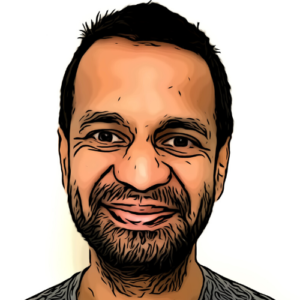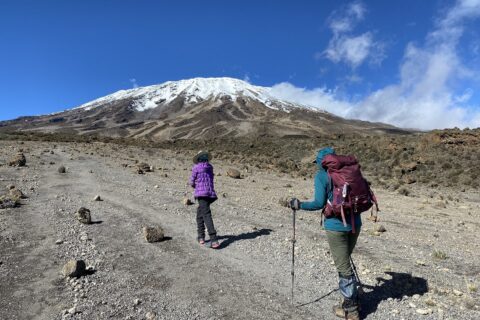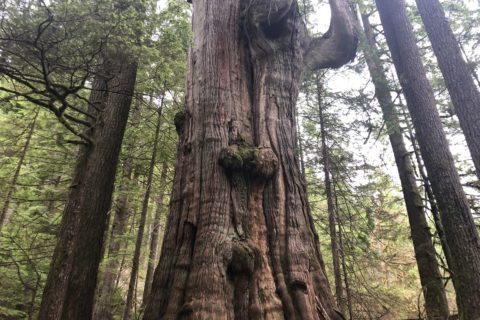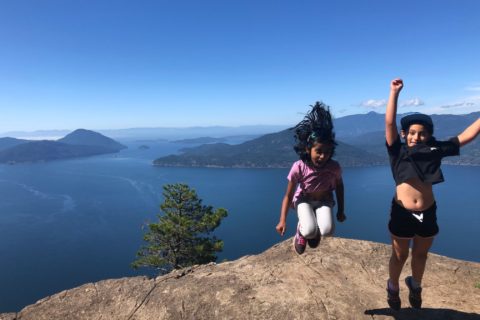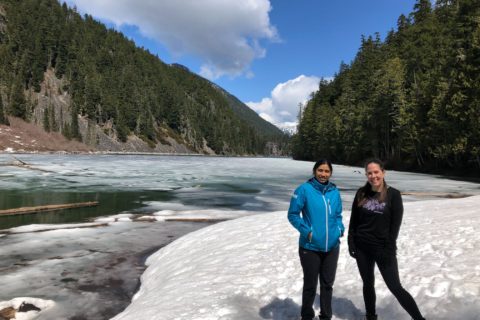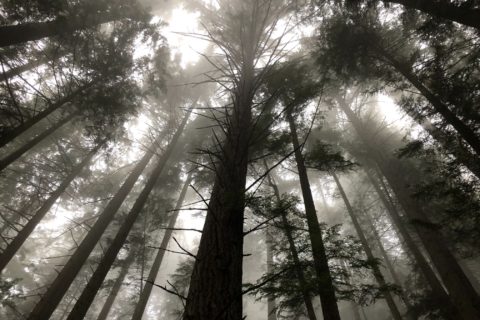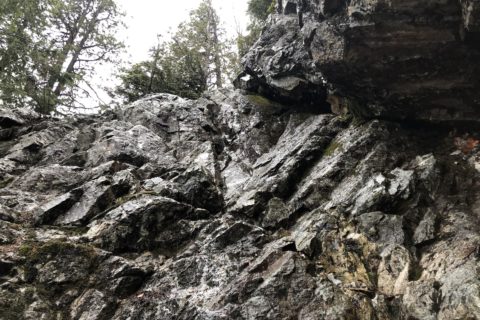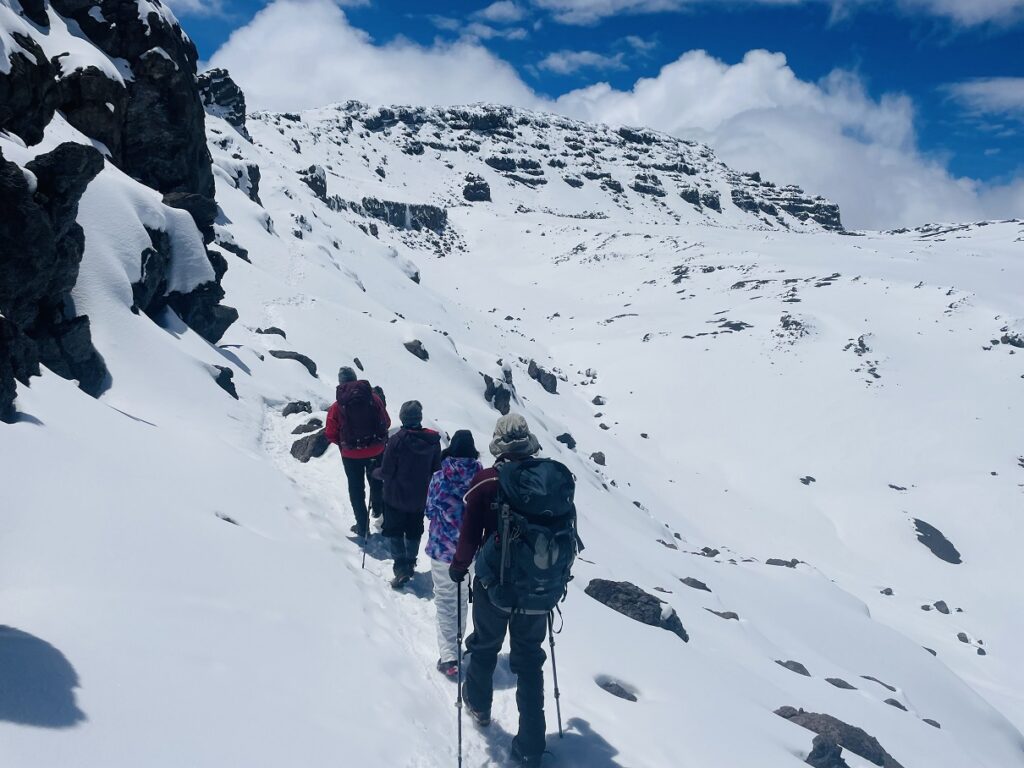
In my Dec post, I shared our experience hiking the Kilimanjaro Trek via the Alternative Lemosho Route over eight days. In this post, I will share our approach to preparing for this trip, including route/guide selection, gear, training, budget, etc.
Which route for the Kilimanjaro Trek?
There are seven routes leading to Uhuru Peak, the summit of Kilimanjaro. The routes vary in terms of the number of days (5 to 9) and their approach (e.g., North vs South) to the mountain. You can read more about each of the routes here.
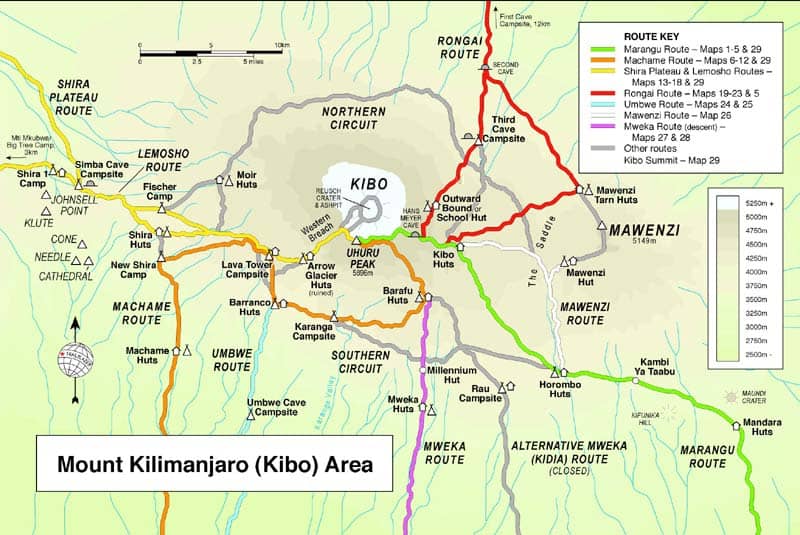
Since it was our first time hiking above 5000 m and we had Kavya with us, we decided to take the 8-day Lemosho route, which provides more time for acclimatization and has one of the highest success rates on the mountain.
The downside of spending more time on the mountain is the cost, which increases by about $400 per day per person. So, there can be a $1200 difference in a 5-day vs. an 8-day route. For our family of three, even with a discount for a 10-year-old, the extra cost would be close to $3000.
But, since we would be arriving in Tanzania from sea level and would have no prior acclimatization before the trek, we decided to be conservative and chose the 8-day route Alternative Lemosho Route.
Fully Supported or Alpine-Style?
Hiring a guide for the Kilimanjaro trek is mandatory. But you have flexibility in how you want to do the trek. The most common option is to do the trek fully supported, i.e., the guiding company takes care of the tent, food, etc., and you just have to carry your daypack. A team of guide(s), cook(s), and porters will support you on the trek. The ratio of the hiker to support staff varies but I have seen a single hiker with 11 support staff. We had 17 people to support us. Which is not uncommon on fully supported treks.
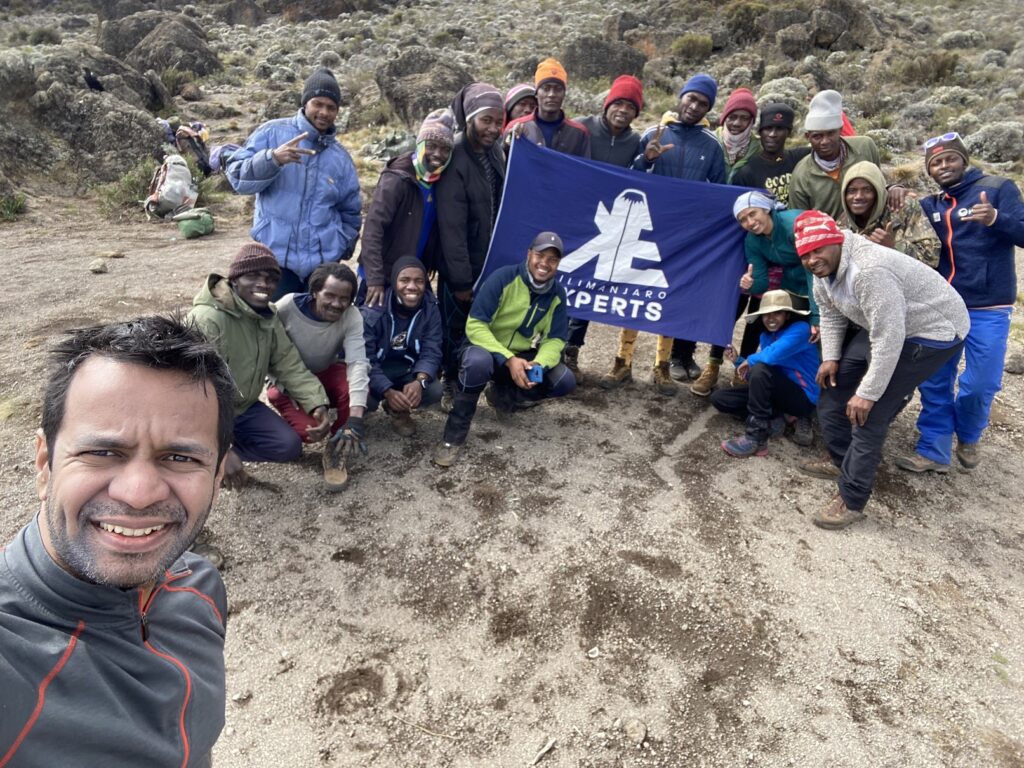
The other option is alpine-style, wherein you carry all your gear and are only supported by a guide, no porters or cook. Kilimanjaro Experts has a dedicated page and a good Q&A on this style here.
When I did the Kuari Pass Trek in India, the maximum elevation was 3850 m, with an absolute elevation gain of about 1600 m (cumulative 2000 m) and a round trip of 27 km. I had done this hike in under 11 hours and self-supported.
We have done 2-3 day backpacking trips on our own, but none at high altitude and for so many days. So, we opted for a fully supported trek.
Choosing a Guiding Company for the Kilimanjaro Trek
Here are a few things we considered while selecting a guiding company –
- Operates locally and is not outsourcing the work to another company
- Guides on Lemosho Route
- Is listed as a partner member on the Kilimanjaro Porters Assistance Project (KPAP) website – ensuring fair treatment of porters.
- Employs guides trained in wilderness first-aid and altitude sickness and are equipped with appropriate medical kit
- Has good reviews – online (TripAdvisor, Trustpilot, etc.) as well as references from friends/BCMC members
- Guided kids on Kilimanjaro
- Communicates well – prompt and clear response over phone/email
- Offers a Safari Package (optional) but would be a plus.
I started with a list of five companies, requested a quote and other information, and finally selected Kilimanjaro Experts for our trek and 5-day Tanzania Safari. It was not the cheapest option, but it was the one we felt comfortable with based on the abovementioned factors.
Henry, the co-owner of Kilimanjaro Experts, was my primary contact and did a great job answering all our questions over email and on Zoom calls. Once in Tanzania, Joshua coordinated the logistics. Rajabu and Dickson were our guides, who, along with 15 other staff members, supported us on our trek and made the summit possible. I share about the Kilimanjaro Experts team in my blog post here.
Overall, I highly recommend Kilimanjaro Experts for the trek and the safari.
Gear for the Kilimanjaro Trek
Here is our gear list in Google Sheets based on the list shared by Kilimanjaro Experts. Tent, sleeping pads and cutlery would be provided, and we had most other items. The few things we bought were boots, sleeping bags (liners) and gaiters.
Hiking Boots/Shoes
Kasturi and Kavya had hiking shoes, but they were not warm enough for the high-altitude trek. Early in December, we expected snow on the summit day. Kasturi luckily found a used Scarpa boot at Sports Junkies, and we found a great deal on a past-season Scarpa boot for Kavya.
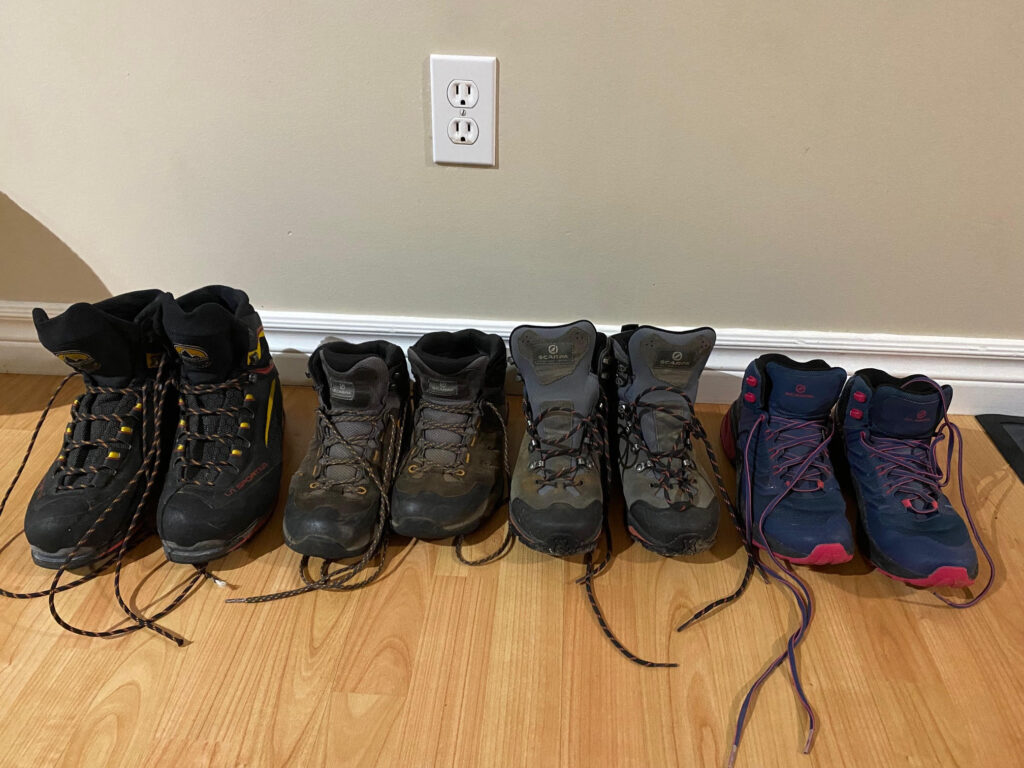
Based on Joshua’s recommendation, I packed my Scarpa hiking shoes and La Sportiva Trango Tower Extreme Goretex boot. We had some fresh snow on the summit night, so I was glad I had the boots with me.
Sleeping Liners
Our highest camp would be School Hut at about 4700 m, and the temperature is usually in the 0 to -10C range. We have one sleeping bag rated -18C and the other two rated – 9C. So we bought two fleece liners to add another 10 degrees of warmth (-19C).
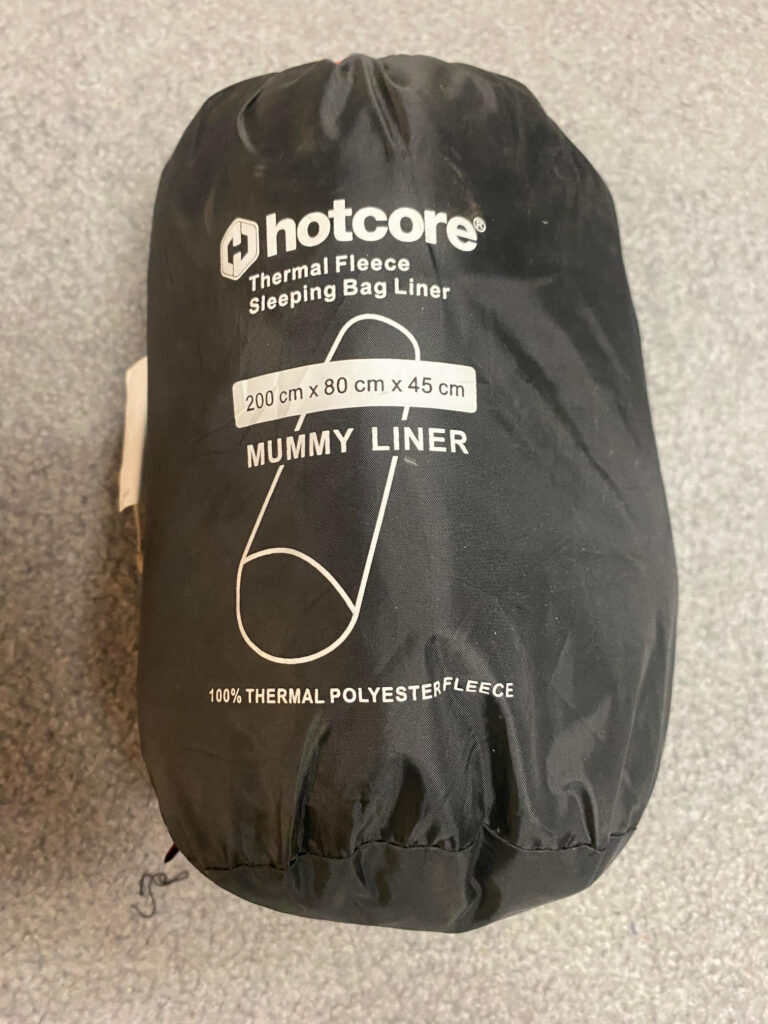
Our sleeping pads were really thick and provided excellent insulation from the ground. We used the liners only a few nights and also had warm Nalgene bottles inside the bag that kept us quite warm through the night.
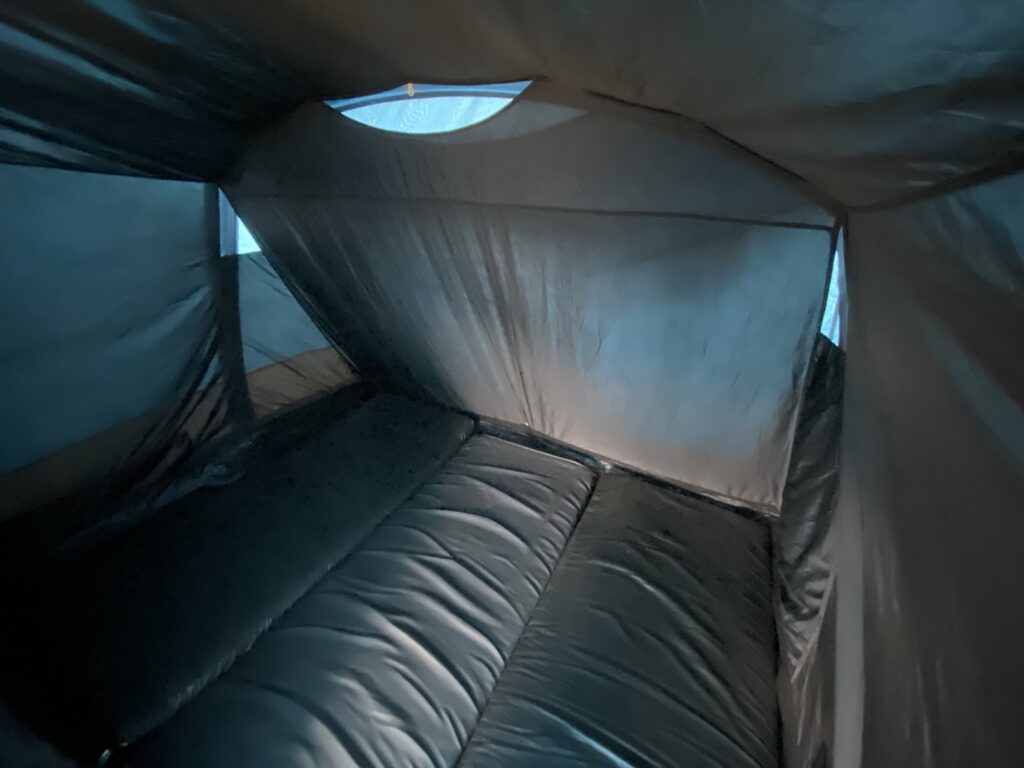
Gaiters
Another gear that was listed as optional but would highly recommend is Gaiters. On scree slopes, the gaiters helped keep the pebbles out of the shoes and helped a lot in muddy trail conditions.
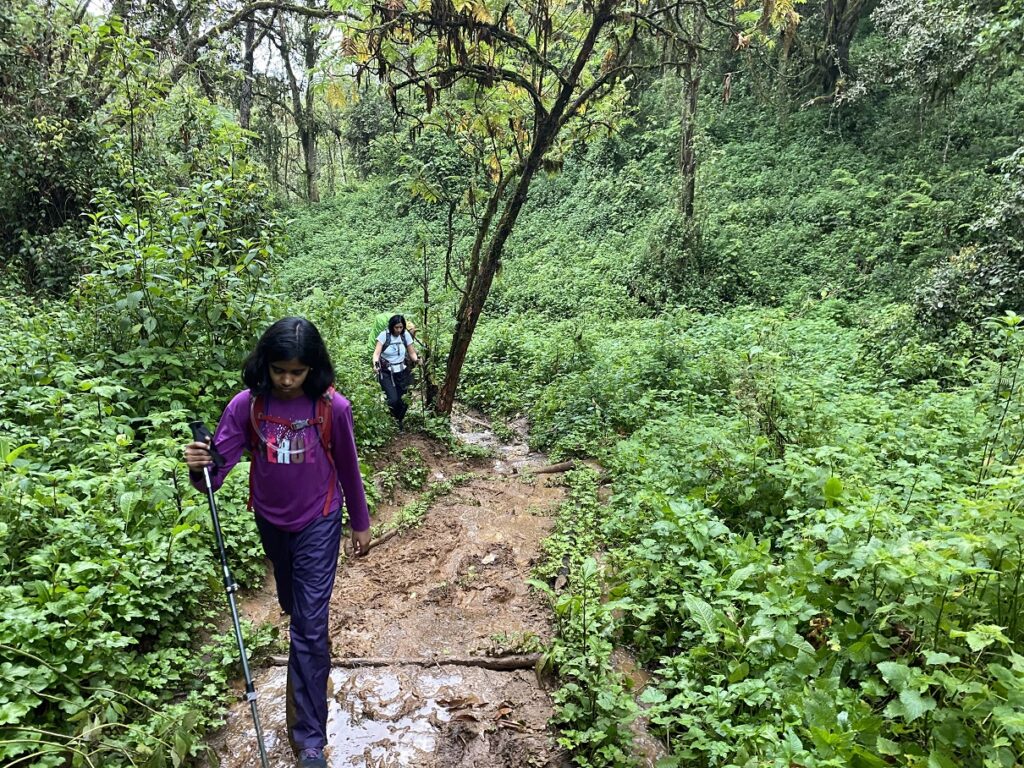
I wish we had used them the first day hiking through the forest when the trail was really muddy in some sections.
Duffel Bags / Backpack
On fully supported treks, duffel bags are critical. We carried jackets, snacks, water, and a few other items we needed for the hike, and the porters carried the rest in duffel bags.
We had one North Face 90L duffel bag and borrowed another 120L duffel bag from our friends. Each hiker can offload about 15 kg for the porters to carry, but we likely had 30 kg or less in two duffel bags.
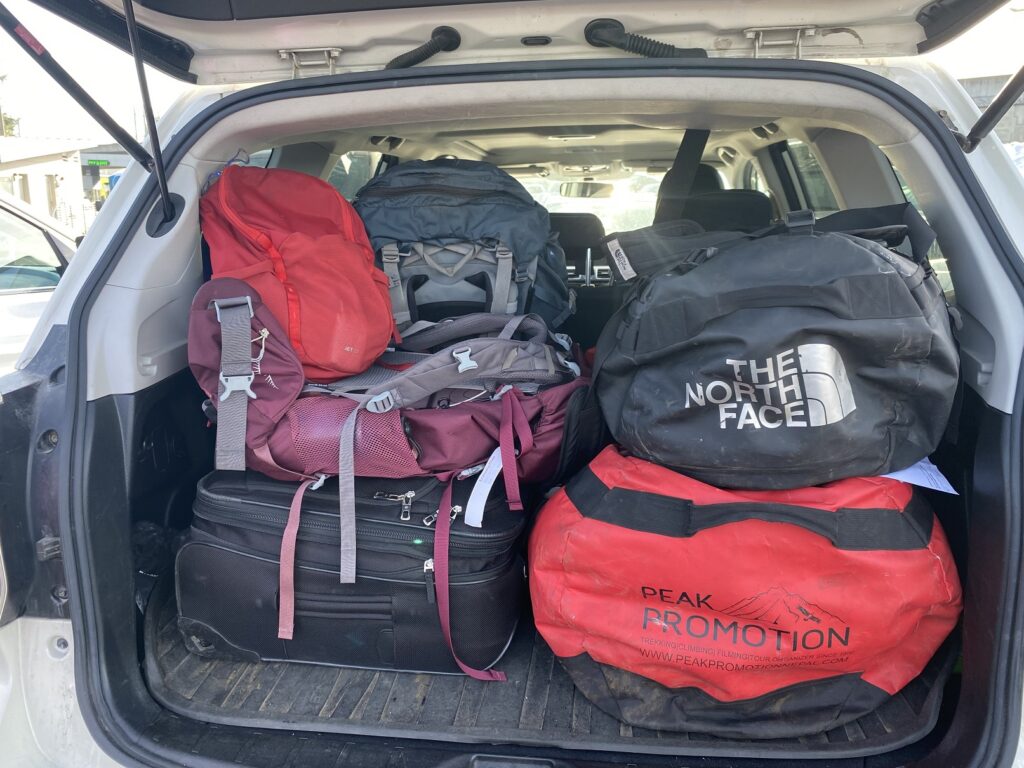
Kasturi and I carried a 50L and 70L backpack as our daypacks. Since Kavya was carrying a smaller 12L pack with water and snacks, I carried waterproof jackets and pants, down jackets, gaiters, etc in my pack. I had enough room to fit Kavya’s pack inside my backpack. We also had a carry on roller bag that we left at the lodge in Arusha with our extra clothes, snacks, gear, etc.
Training for Kilimanjaro Trek
Our training had two components – aerobic and strength training. I have been training using the approach laid out by Scott Johnston and you can read more about the basic principles here. If you want a detailed training plan, you can check out some options here or if you want to keep things simple and just need a high level overview, you can check out this resource.
My training in 2023 was primarily for rock climbing, but I did continue to do some aerobic training. Most of it was Zone 1-2 (low intensity), with some Zone 3-4 (high intensity) interval training on the treadmill.
Kavya and Kasturi did some strength training at home and mainly did hikes for aerobic training. Strength training for Kavya was 15-20 minutes of bodyweight workouts in a circuit – squats, lunges, hops, etc. Scott Johnston had recommended Tudor Bompa’s book for kids (Total Training for Young Champions) and it was a great resource.
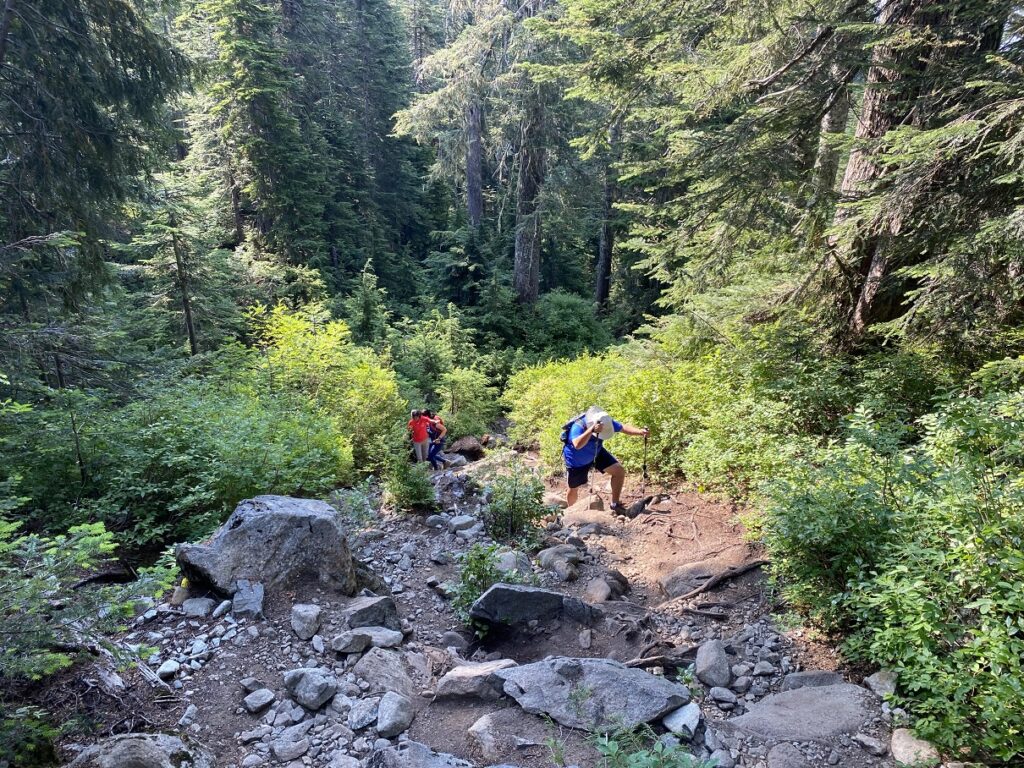
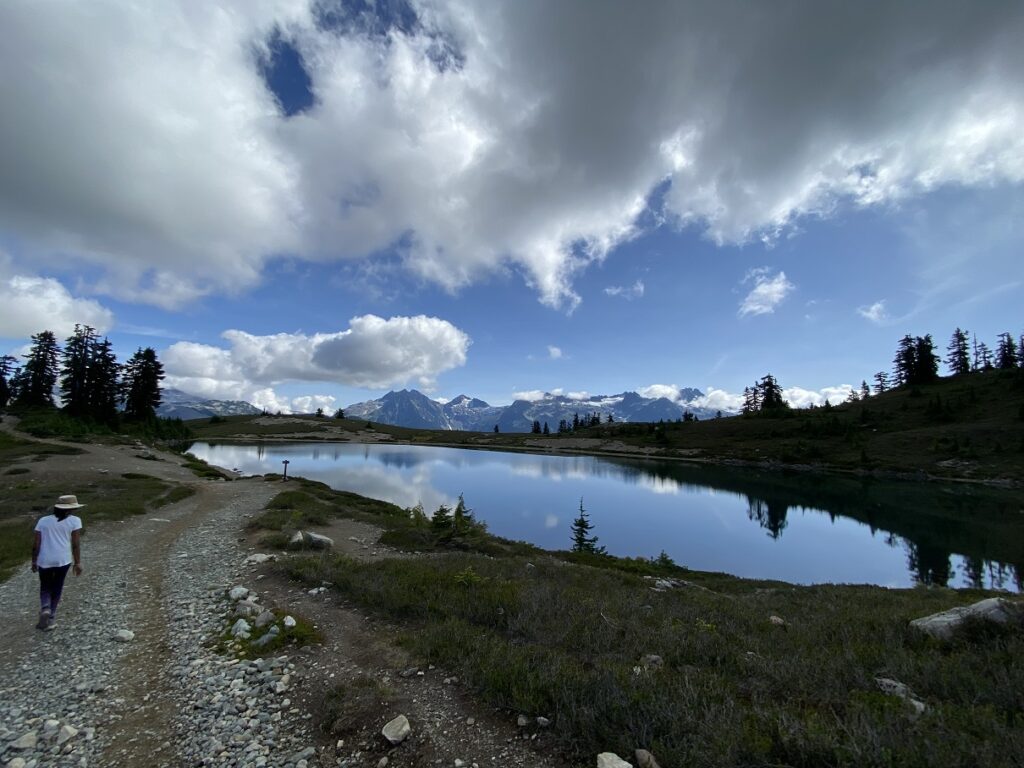
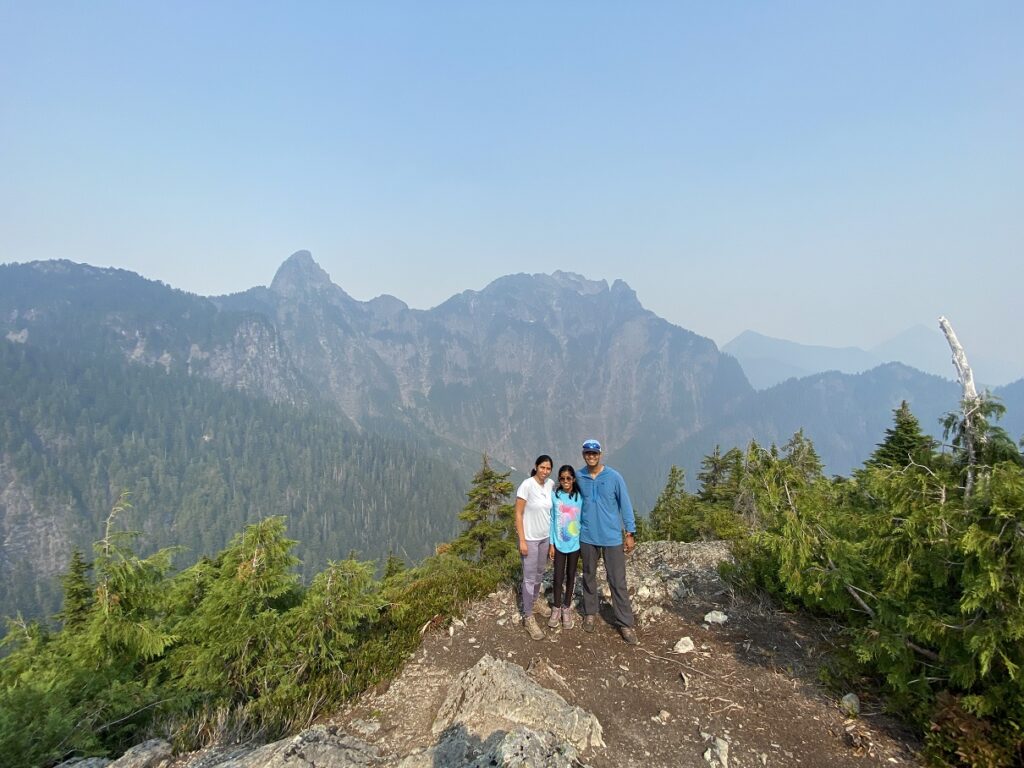
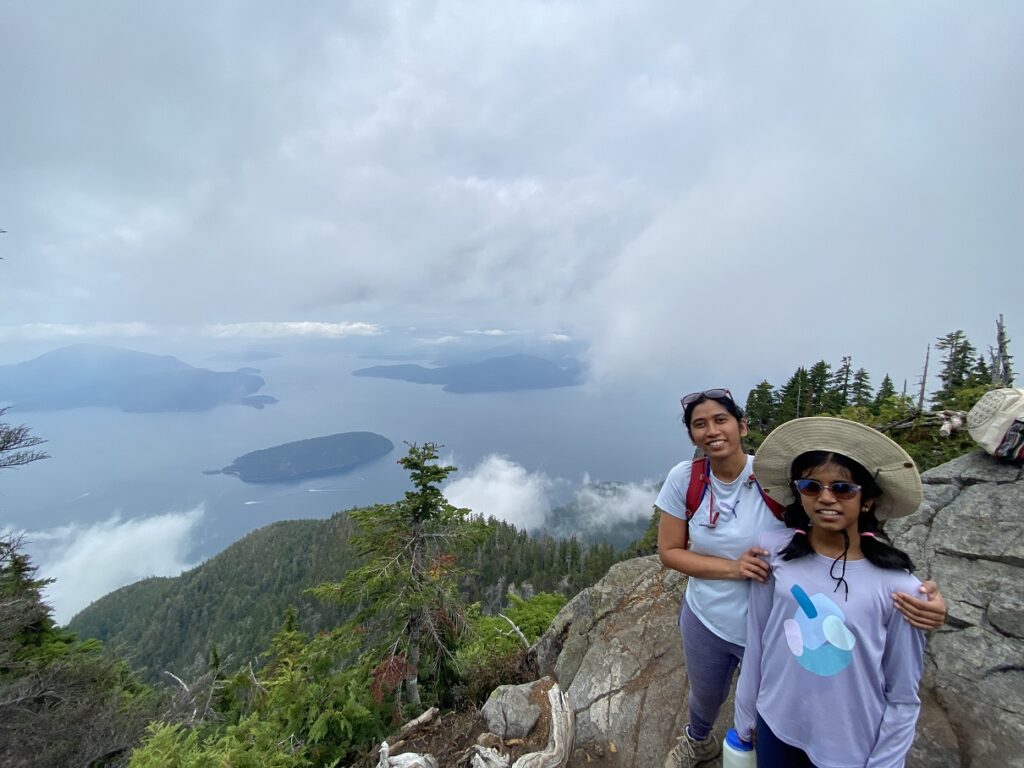
Our longest hike was a day trip to Elfin Lakes, about 22 km, with an elevation gain of about 1100 m. We did several other hikes on Grouse, Cypress and Golden Ears.
From around mid-Sep to Oct, I had some persistent back pain, and that limited my workouts. But given the last few years of training, I felt comfortable with my fitness for the trek.
Kavya and Kasturi would go on long walks (10+ km) around our community. By the end of November, they had hiked more than 150 km in preparation for the trek.
We had trained for the distance and elevation gain, but there was no way to train for the altitude locally. A 3 km hike with 800 m vertical took less than two hours in Vancouver but took five to six hours on our summit day. Above 5000 m, we were really slow, resulting in a summit day of 16 hours (11 hours to the summit, 5 hours down to our campsite), including breaks.
If I were to plan a similar trip, I would include long (12+ hour) hikes in our training to prepare us for physical exertion.
Vaccination / Medication
We got our vaccination from Voyage Vax (Wellness Pharmacy) in Langley. Our insurance did not cover the consultation fee of $60, but all the vaccinations were included. Even the prescription tablets for Malarone and Diamox were covered by insurance. Voyage Vax directly bills the insurance company, and overall, it was a hassle-free experience.
Government of Canada has a guideline on vaccinations for people visiting Tanzania. Your guide as well as the travel clinic can also confirm the vaccinations required for the trip depending on the areas you plan to visit e.g. Zanzibar, Serengeti, etc.
Trip Budget / Tips
In 2023, we paid around USD 3000 per person for the Trek (USD 2200 for Kavya), which took care of all the expenses on the trek except the tips. Tipping guides, cooks and porters is a common practice and is quite significant. Each guiding company recommends how much you should tip, usually $300-$400 per hiker.
Our total tip to the Kilimanjaro Experts staff (17 people) was USD 1100. Rajabu, our head guide, worked with the cook and a representative from the porter to distribute this amount among all the staff. You can read more about the tipping policy here.
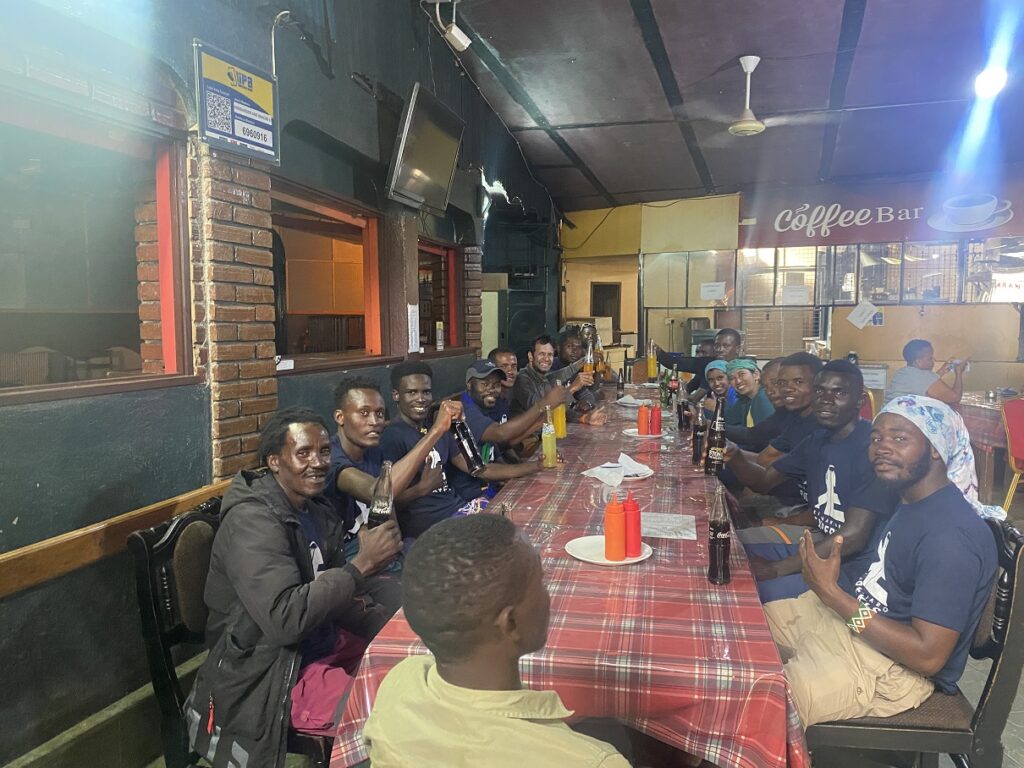
Our 5-day Safari cost was around USD 1800 per person. We could cut the cost by camping, but after the 8-day trek, we preferred to stay in lodges. Here again, the cost took care of all our expenses on the safari. The tip to Safari guide/drive was about $25 per day.
We carried about USD 1300 in cash that took care of the tips. We also had a USD Debit Card from TD and a Wise multi-currency (USD/TZS) card to avoid currency conversion charges. We had to make ATM withdrawals twice to pay for restaurants, laundry, souvenirs, etc. Each withdrawal cost us about USD 6-7, which seemed high.
Overall, the Kilimanjaro Trek and Safari cost in Dec 2023 was about USD 15,000 / CAD 20,000 for the three of us, excluding flights.
I hope this helps with your own trip planning. If you have any questions, please post them in the comments. Wish you the best!
Resources:
Tanzania Posts: Kilimanjaro Trek | 5-Day Safari
Kilimanjaro Experts: Alternative Lemosho Route Itinerary
Kilimanjaro Porters Assistance Project: KPAP
Vaccination: Voyage Vax | Government of Canada
Disclosure: I work part time for Evoke Endurance. However, the Evoke Endurance or any other links I have shared in the post and under the Resources section are not Affiliate Links.
Did you enjoy reading this post? Please subscribe to get weekly updates. Please share your feedback in the comments section below. Thank you!
